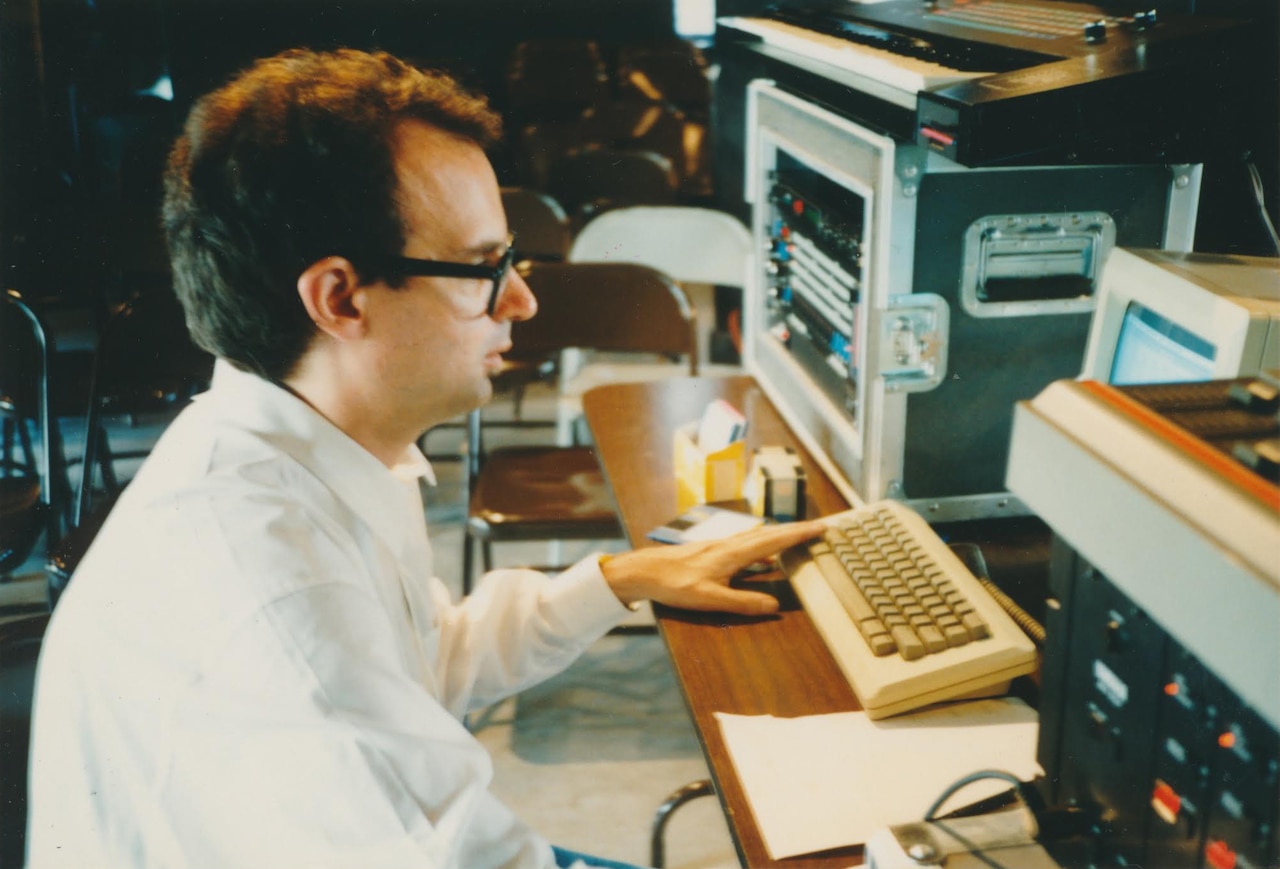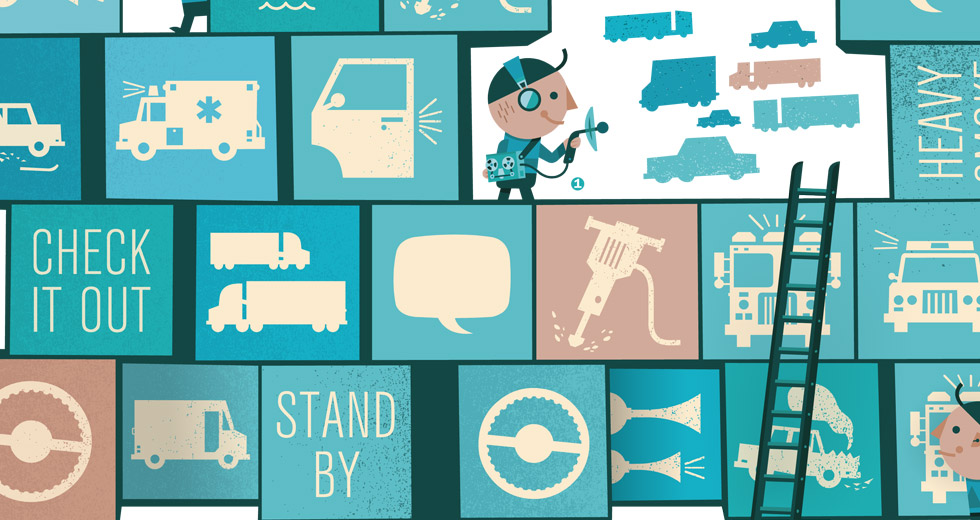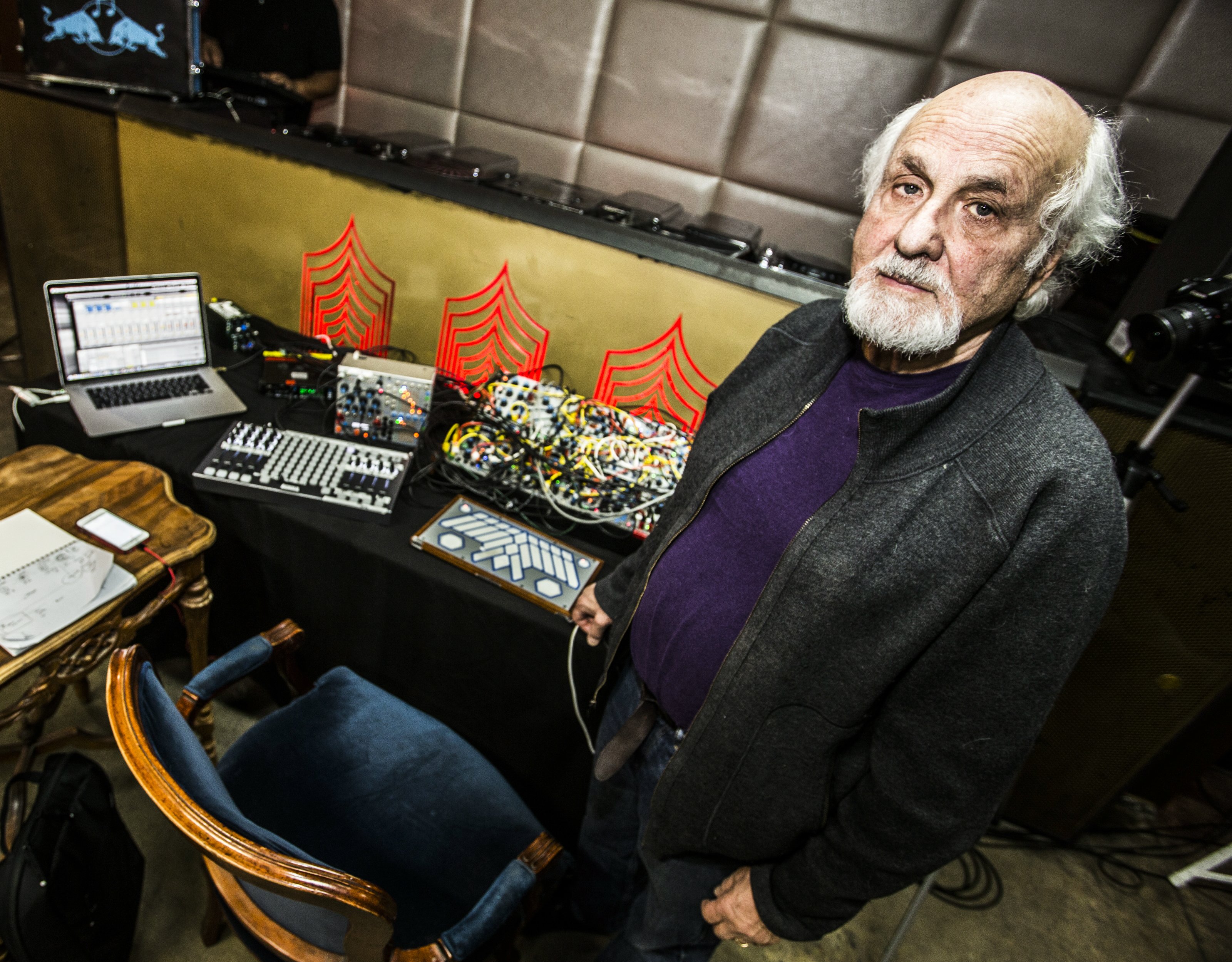Charting Carl Stone’s Musical Evolution: Sampling the Sacred and Profane
Todd L. Burns sits down with the maverick American composer

American composer Carl Stone performed computer music live before just about anyone else thought to do so. (Around 1986 to be exact.) He also started sampling music, oddly enough, right around the same time hip-hop was kicking off. In short, Stone’s always been a bit ahead of his time. That much is clear when you listen to the crucial retrospective of his work recently released on Unseen Worlds, which shines a light on compositions from the ’70s and ’80s that showcase his impressive loop-based techniques in full flight.
A pioneering figure in experimental electronic music, we caught up with Stone last year to discuss how he came to create this type of music and some of the core philosophies behind his work.
Morton Subotnick
I was intrigued to see that Morton Subotnick was one of your teachers at CalArts.
Yeah. He was my main teacher, really.
What were the main lessons that you took away from your work with him?
It wasn’t so much about the practical aspects of electronic music synthesis with him, there were other people on the faculty who did that. He has a very keen, sort of analytical, mind and a really interesting point of view. So we would do everything from analyzing Mozart to talking about Xenakis and the experimental, electronic music of the ’60s and ’70s, which is when I was a student.
It covered a pretty wide gamut, and a lot of it was actually just personal anecdotes from him. He has a lot of great stories. Studying with a master sometimes, the point of the lesson is not immediately obvious through some anecdote, but eventually – it could be years later – it’ll click.
The best thing that Mort did with me in the student-teacher relationship was not in the classroom. He spotted some things about me, both proclivities and deficiencies, I guess, and figured out some interesting ways to compensate for them. They really changed my whole point of view towards composition.
One of the things he did was he got me a job in the music library at the school. They had a great LP collection and a lot of rare stuff from all over the world and they wanted to preserve it, but they wanted students to have access to it. They knew that they would eventually get broken or chipped or stolen or scratched or whatever. So the idea was to dub every LP in the library collection, tens of thousands, onto cassette.
If you were to try to dub one record at a time serially it would be... you’d be like Sisyphus, you know, it would never end. So they set me up in a room with three turntables and three tape recorders, and the idea was just to keep three rolling all the time. And you could monitor any one of them, but you could also monitor two or more, and that’s sort of what I got into doing. I’d have a string quartet on one turntable and some pygmy music from Central Africa on the second turntable, and maybe some electronic music from the Institute of Sonology in Holland on the third.
I would sort of do this mixing and notice the connections and do mash-ups. I didn’t think of it as composing at the time, but it had a big influence on my work, which is all about combinations of disparate material. Like taking ’90s Eurotrash pop, like “Barbie Girl,” and matching it up with traditional Japanese music, and somehow getting it to work. That was, I think, the single most important thing that Mort taught me by getting me that job.

Radio
I had a show on KCRW for a very short time. I hadn’t really listened to KCRW before I worked there. I was listening to KPFK, which had a much more radical point of view. The program director stormed into the master control one day saying, “They don’t want to listen to this at 8:30 in the morning,” and that was it. The thing that sent her over the edge was when I played the complete version of Steve Reich’s “Drumming.” It’s about two hours long .. Without a break from beginning to end! She says, “Two hours of drumming, are you out of your mind?!”
“Sukothai”
“Sukothai” is a piece from the late ’70s that used the rondo from Purcell’s Abdelazer, played on harpsichord. The theme itself is something that a lot of people have heard even if they haven’t heard the original from Purcell, because Benjamin Britten appropriated it for his Young Person’s Guide to the Orchestra. I was interested in something that was maybe a familiar musical theme but rendered in a more unique way, so this theme that everybody knew played by an orchestra instead played by a harpsichord.
I was challenging myself to try to create some music without using any of the synthesizers or extensive electronic gear that I had had access to when I was in college. So I was out on my own, I had no equipment, I had no real money. In those days, of course, there were no personal computers. There were modular synthesizers, but it could easily run 10, 20, 30,000 dollars. There was no DX7 or anything like that.
The process of the piece was a very systematic, procedural one. I recorded the Purcell on tape and then I mixed the tape down... stereo recording, mixed it to mono and recorded it on the left channel of the second tape recorder, rewound, and then recorded it again on the right channel. And because I wasn’t really trying to synchronize it all, there was a certain amount of time delay in between the two. When you played it back it sounded a little bit like a canon.
Then I mixed those two versions of the harpsichord into mono, and then recorded them on the left channel of my tape recorder, and rewound again, and mixed the same two onto the right channel. So the two delayed harpsichords had now become four, and again, they weren’t synchronized, but the amount of delay was, of course, different from the first. It’s all a very imprecise procedure. So now I had a little more complicated of a rhythmic pattern. Not strictly on the beat. Then I thought, “Well, this is kind of interesting, so I’ll just see what happens if I mix my four down to a mono signal and then record it on the left channel on the left tape recorder.” You see where I’m going.
My four times two became eight. Times two became sixteen. I just kept going throughout the night, constantly rewinding. You know, you could figure how many times I had to rewind and replay and rewind and replay. But each time, of course, I did it, it was different. The thing is gradually transforming from two to four and I am, throughout the long night, listening to this transformation happen. Not only was the end result kind of interesting when I got up to the final 1024 tracks, but each step along the way was interesting, too.
Were you familiar with [Steve Reich’s] “It’s Gonna Rain” and Alvin Lucier by this point?
Yes. And they were influential. It’s the same thing, where the form and the content are joined. It’s a systematic process that’s revealed through its own playing. The work explains itself. That was also very interesting for me, so that was huge influence. And we had studied that in school. Reich came through and gave a lecture at CalArts.
“Sukothai” is both the name of the piece and the name of the process that I use, and I’ve used the process again in other ways. Now, of course, I don’t have to record on tape recorders and rewind, it’s all just a push of a digital button and a program that I wrote.
If the listener is curious, they want to use their brain to try to name that tune, they’re welcome to do that.
Digital Delay
You were using tapes for quite a while to do compositions, and then you started using digital delay. Why did you move on to that?
Well, in the beginning I thought tape was the medium for me because I was interested in precise control. It’s kind of the anti-improvisation, where the composition was fixed, a very French approach. You listen to this musical object, without any theatrics or drama and without the imprecision and mistakes made by live players.
But I found that really to connect with an audience, especially in those days, playing music through loudspeakers did not do it. Plus, I grew tired of things being fixed. I became more interested in experimentation and improvisation.
In the beginning, I was working with tapes and live performance using delay systems and things like that. Then I went to an Audio Engineering Society convention, and I stumbled on this box that was doing all the looping and the cut-up stuff that I had been laboriously doing with razor blades, and it was doing it just on the fly. They had a microphone set-up and you could record into it and this was exactly what I was looking for. Then I saw the price and I sort of despaired, but I was able to get a grant and I purchased the machine. It cost about as much as a car in those days.
So I did a tour in Europe where I would go out in the daytime and record the sounds of the city – and that night I would bring the material in. The first night was only Brussels, then the second night was Brussels and Ghent, and the third night was Brussels plus Ghent plus the next city, so it accumulated.
You got this hugely expensive digital delay box stolen ... twice? [laughter]
Yeah, that’s right. I replaced the first one with insurance money, but the second time I said, “Forget it.” By that point, MIDI had come around. Computers were now affordable. They weren’t exactly portable, but they were luggable. So I got an SE/30, I got a sampler, I got a TX816, which is sort of eight synths in a box.
I began a whole new phase of my music. I started programming and I started working with interesting programs that were a little bit off the radar. Music software in those days, there weren’t a lot of options. Most of them were sequencers. There was a program called Vision and another one called Performer. I used them for production, but I was more interested in these algorithmic programs that were being developed by people like David Zicarelli, who went on to eventually license or purchase the rights to Max and took it forward to a whole new level.
Painters, Process, Physicality
In the past you have compared your process to painters like Rauschenberg and Warhol.
Well, those artists were interesting to me, Duchamp also, because of their use of appropriative materials and materials from popular culture which they bent to their will. I was also very influenced by the light sculptors from California like Robert Irwin or someone like James Turrell.
There’s no appropriation with them, but they, in their way, are working with process and working in extremely subtle ways in perception, and that’s very interesting for me. I think that perception and changes in perception in light works is comparable to what happens with pure minimal music like with La Monte Young, for example, or Charlemagne Palestine, or dare I say some of my work, where there is either no change or a very, very small change over a long period of time and what changes, really, is what’s in our own psychoacoustic brain.
Is physicality something that’s important in your work?
It’s not present in every piece, but I like when it happens. I do like pieces that can sort of hit you on both a physical and an emotional level. I feel sometimes that some noise artists are all trying to kill their audience, and I’m not that way. I’m not trying to make any ears bleed or destroy anyone’s solar plexus.
The common wisdom is we hear sound down to 20 Hz, but it’s not true. We can hear down to a fraction of a hertz, in fact. Not necessarily with our ears, but we hear it corporeally. I’m interested in researching that for some future piece. We’re in a room right now, and there is a frequency sound being produced by those windmills and creating a new strata of... I mean, you could call it noise pollution if you want, but I tend to reject the idea of noise pollution.
Juxtaposition
When sampling, it seems like you really enjoy juxtaposition. Even when the audience doesn’t know what’s being juxtaposed.
I do. Some people will list their sources or precede their presentation by saying, “Now I’m going to sample this or that,” and I’m not interested in that. If the listener is curious, they want to use their brain to try to name that tune, they’re welcome to do that. Sometimes I like the reveal, but it’s not really the most important thing. Of course, the juxtapositions have cultural implications and artistic implications, obviously, but they can also be appreciated simply as sound qua sound.
Over the years you’ve used “Barbie Girl” by Aqua, or Britney Spears. What some people – especially in the scene you’re working in – might regard as trashy pop music. Do you get some sort of thrill out of this deconstruction of it?
I guess, yeah. That’s one of the things that ... is kind of vulgar and trashy and can somehow give it a patina of class. [laughter] I’m interested in the sacred and the profane, really. I’m not a religious person, but I work with a lot of religious music also. I just gravitate towards it, and I gravitate towards Cher and Britney Spears without really thinking about it. I don’t know, maybe a couple of years of psychoanalysis and I might have the answer. [laughter]

